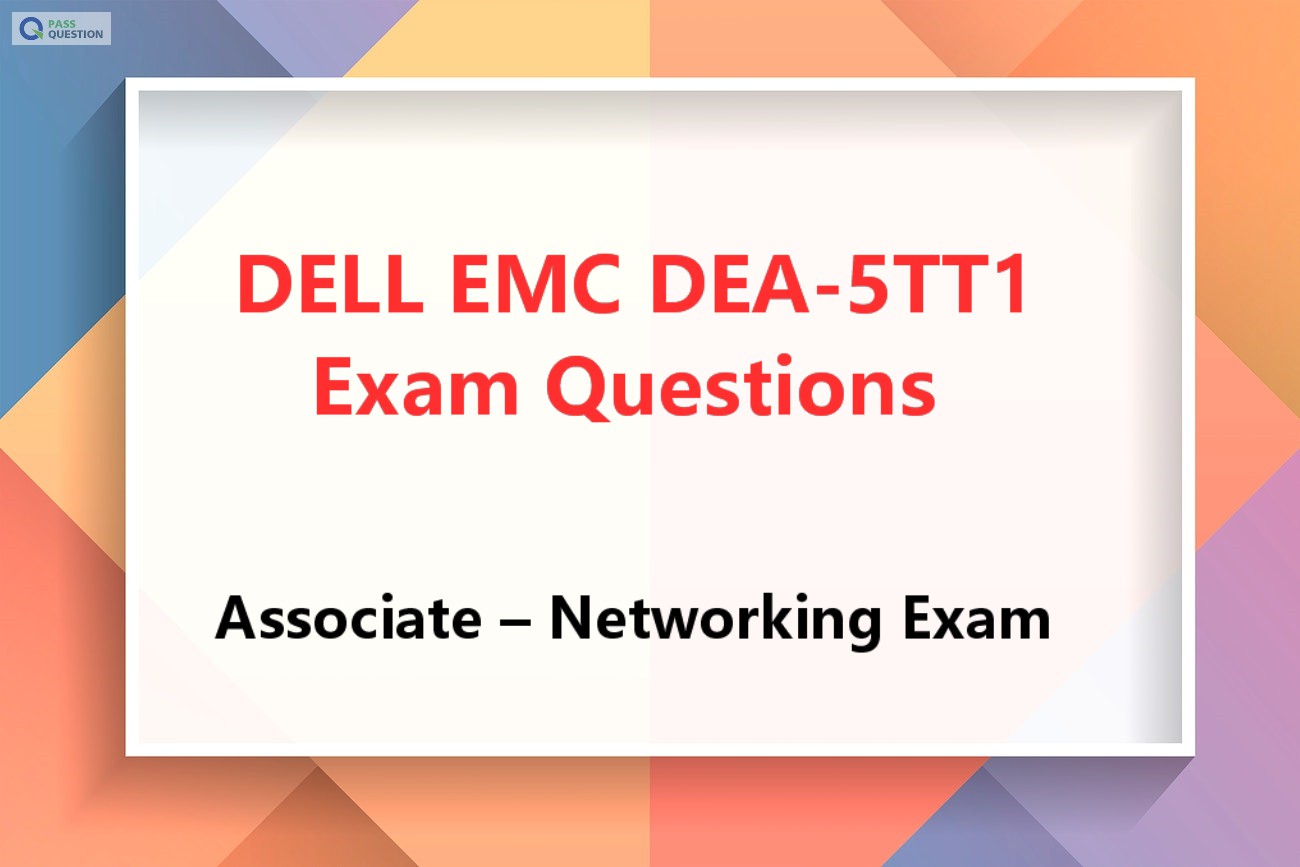DELL EMC DEA-5TT1 Exam Questions - Associate – Networking Exam
DEA-5TT1 Associate – Networking Exam is new available at PassQuestion.com,you will get the latest DELL EMC DEA-5TT1 Exam Questions which cover the real DEA-5TT1 exam topics to ensure you pass DELL EMC DEA-5TT1 exam successfully. PassQuestion professional provides DELL EMC DEA-5TT1 Exam Questions as the same as real exam that will guarantee you to pass your Associate – Networking Exam DEA-5TT1 at the first time! You can save a lot of your time and energy if you use PassQuestion product in your preparation.

Associate – Networking Exam DEA-5TT1 Information
DEA-5TT1 exam is a qualifying exam for the Associate - Networking track. This exam focuses on basic Networking foundational skills and portfolio introduction.There are 60 questions in the real test and time duration is 90 minutes, the pass score is 60.
The Dell EMC Networking Associate certification is mainly targeted to those candidates who want to build their career in Networking domain. The Dell EMC Certified Associate - Networking exam verifies that the candidate possesses the fundamental knowledge and proven skills in the area of Dell EMC DCA-Networking.
Exam Topics Covered In DELL EMC DEA-5TT1 Exam
Networks – The Basics (7%)
- Explain the purpose and function of network devices such as switches and routers, WANs and LANs, and common Campus and Datacenter topologies
- Explain the purpose and basic operations of the OSI model
- Describe the concepts and use cases for Layer 2 - Data Link Layer, Discovery protocols
Ethernet Networking (7%)
- Describe Ethernet networking
- Describe the standards of how Ethernet operates and how addressing is used to move data on the Ethernet network
Switching Fundamentals and Creating a Switched Network (23%)
- Explain the reason for network switching and the process of moving frames within a switched network
- Explain how to differentiate between a broadcast domain and collision domain
- Explain how to select cabling and the cables that are certified for network connectivity
- Describe the concepts of VLANs, Spanning-Tree protocol, and Link Aggregation and how each functions within the network
Internet Protocol v4 and v6 (14%)
- Identify and describe the differences between private and public IP addressing, and describe classful and CIDR addressing
- Describe IPv4 addressing and explain the process of using IPv4 in the network
- Describe IPv6 addressing and explain the process of using IPv6 in the network
Transport Layer (7%)
- Describe the function of the Transport layers, how it supports host-to-host connectivity, and protocols used by the Transport layers and their use cases
IP Routing Technologies and Routing Protocols (15%)
- Describe basic routing concepts and explain how to interpret a routing table
- Identify and describe the differences between static and dynamic routing
- Identify and describe the classifications of routing protocols and how they are used to route within and between autonomous systems
- Explain the routing process used by RIPv2, OSPF, and BGP (link state and distance vector routing) routing protocols
IP and Network Services (7%)
- Describe the DHCP and NTP service and explain the configuration steps
- Describe Access Control Lists (ACLs) and Network Address Translation
Security, Authentication, and ACLs (3%)
- Describe the options and processes of securing access to the network
Switch Stacking, Dell EMC Campus, Datacenter, and Modular Switch Portfolio(10%)
- Describe the key concepts of stacking and the hardware required to configure stacking using OS 6, OS 9, and OS 10
- Describe the switch models that are part of the Dell EMC Campus, Datacenter, and Modular Switch portfolio
Dell EMC Switch Software, Configuration, and Management (7%)
- Explain how software is used to configure and manage Dell EMC switches, and describe the steps to complete an initial switch configuration
View Online Associate – Networking Exam DEA-5TT1 Free Questions
1. What is a fundamental risk of the Peer-to-Peer network model?
A. Adding peers generally decreases network throughput
B. Lack of solid security due to cross-peer resource sharing
C. A single point-of-failure
D. Adding peers decreases the capacity for resource sharing
Answer: B
2. Which network device functions only at Layer 1 of the OSI model?
A. Switch
B. Bridge
C. Hub
D. Router
Answer: C
3. Which IEEE 802.3 sublayer provides addressing and mechanisms that enable network devices to communicate, and provides node-to-node flow control and error management?
A. Physical signaling
B. Logical Link Control
C. Media specifications
D. Media Access Control
Answer: D
4. Which address is a valid 802.3 MAC address?
A. 00:C4:4F:3C:7A:00
B. 00:C4:4F:3C:7A:00:01
C. 00:G4:4F:3C:7A:00:01
D. 00:G4:4F:3C:7A:03
Answer: A
5. A network administrator needs to identify which MAC addresses are static. Under which column in the output of the show mac-address-table command is this information displayed?
A. Interface
B. Type
C. MAC address
D. State
Answer: B
6. Which nanometer range will an SFP work in multi-mode?
A. 850
B. 1310
C. 1510
D. 1610
Answer: A
- TOP 50 Exam Questions
-
Exam
All copyrights reserved 2025 PassQuestion NETWORK CO.,LIMITED. All Rights Reserved.

